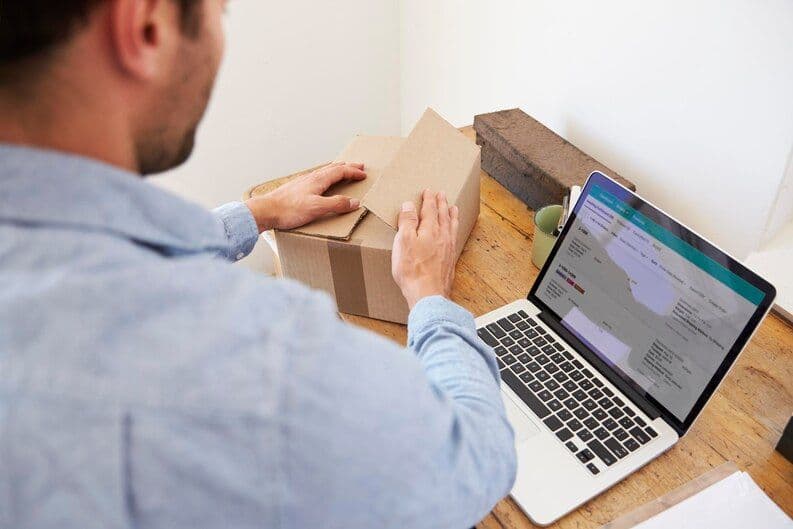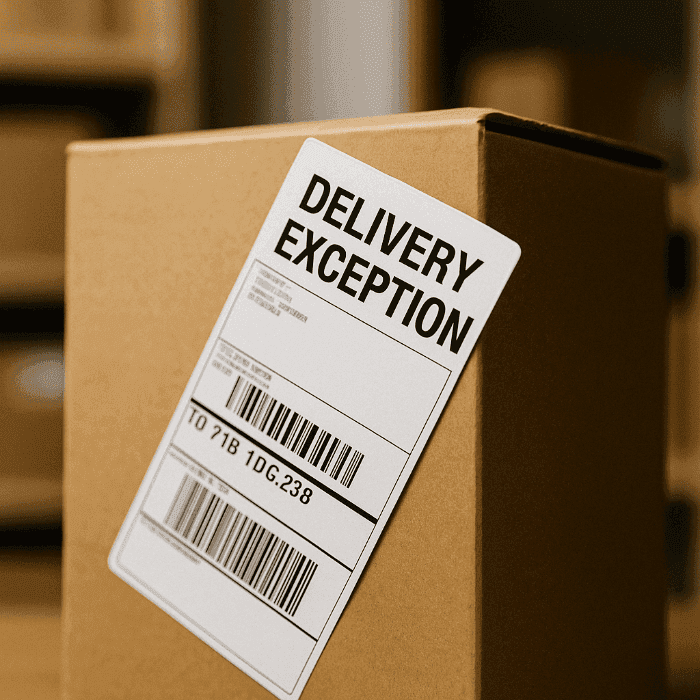Weather turns nasty, a ZIP code is off by one digit, or seasonal demand overwhelms the network, and suddenly a reassuring “Out for Delivery” morphs into the ominous “Delivery Exception.” For retailers and operations teams, that single status update can trigger a flood of support tickets, refunds, and brand-damaging reviews.
This guide will take the complexity of understanding shipping exceptions, what they are, why they happen, and how to keep your customers calm (and coming back) when they do. You’ll learn carrier-specific nuances, proactive prevention tips, and a playbook for swift resolution.
Table of Contents:
- What Are Shipping Exceptions?
- Common Causes of Shipping Exceptions
- Managing Shipping Exceptions Across Carriers
- How to Prevent and Respond to Shipping Exceptions
- Key Takeaways on Delivery Exceptions
- Frequently Asked Questions about Shipping Exceptions
What Are Shipping Exceptions?
A shipping exception (also called shipment exception, package exception, or simply exception) is a carrier notification that an unexpected event is preventing a parcel from following its planned route or delivery schedule. Carriers use slightly different wording:
| Carrier | Typical Tracking Phrase | Official Meaning |
|---|---|---|
| FedEx | “Delivery exception” | Temporary delay due to unavoidable circumstances such as weather or natural disasters; not always a late delivery |
| UPS | “Exception: Action Required” | Package is in the network, but an unexpected error may change the scheduled delivery date |
| USPS | “Alert” or “AL - Delivery Exception” | Delivery interrupted by events like local weather, address issues, or volume spikes |
Exceptions are status updates, not verdicts, most parcels still arrive, just later or after additional steps.
Understanding Delivery Exception Status Updates
When tracking dashboards display messages like “delivery exception local weather delay” or “processing exception,” they’re flagging the precise stage where the parcel steered off plan:
- Processing exception during transit: A scan at a hub detects damage, barcode mismatch, or pallet reroute.
- Address exception: The street, unit, or postal code fails validation. That means that they did not find the address with the package ready to be delivered.
- Local post office exception: The last-mile facility cannot dispatch (staff shortage, mechanical failure). A totally unpredictable variable
- Delivery attempt exception: A very common occurrence, a driver arrives but access is blocked or a signature is required, and nobody’s home, so they have to bring it back due to security concerns.
Knowing which scan produced the exception helps you decide the next move, whether to wait, reschedule, or intercept.
Common Causes of Shipping Exceptions
Below are the most frequent reasons packages don't arrive on time:
1. Delivery Exception Due to Local Weather Delay
Snowstorms, hurricanes, and flooded roads force carriers to ground aircraft or reroute trucks. Even indoor hubs slow down when employees can’t reach the facility. Seasonal wildfires and heat waves can trigger similar shutdowns.
2. Incorrect Address or Inaccessible Location
A single wrong apartment number or a gated community without delivery codes creates an UPS delivery failure. Address-correction services add a day or two and extra fees. This is a very common occurrence, but it’s easy to fix.
3. Processing Exception During Transit
High-speed sorters kick out parcels that exceed size limits, miss barcodes, or show possible content leaks. These are quarantined for manual review, generating a processing exception.
4. Package Delayed Due to Unforeseen Reasons
Holiday volume, flash-sale spikes, labor strikes, or customs inspections can mark a parcel “package delayed due to some unforeseen reasons.” Some carriers hold freight until batch clearance is complete. Again, an unpredictable variable that adds more waiting time to your delivery.
Managing Shipping Exceptions Across Carriers
Here’s how major carriers typically manage shipping exceptions and what tools are available to address them:
FedEx Delivery Exception: What to Expect
FedEx may still meet the original estimated delivery date after a brief hold. Their Delivery Manager lets recipients reroute or hold at a nearby location. For businesses, automated email alerts keep customer service ahead of the panic call.
UPS Delivery Failure and How to Resolve It
UPS lists the reason for the exception in the tracking details, such as a“security delay,” “incorrect address,” etc. Use UPS My Choice® to authorize driver release or adjust delivery windows. If the parcel cycles back to a warehouse, open a Delivery Change Request before the second attempt.
Local Post Office Exception with USPS
USPS alerts often read “Delivery Exception, Local Weather Delay” followed by the city code. Contacting the destination post office with the article number can prompt same-day reprocessing once conditions clear. Priority Mail Express refunds apply if guaranteed windows are missed.
How to Prevent and Respond to Shipping Exceptions
Take a look at practical steps businesses and individuals can follow to prevent shipping exceptions and handle them efficiently when they happen:
| Proactive Step | Why It Works |
|---|---|
| Validate addresses at checkout (street, unit, ZIP+4) | Reduces UPS/FedEx address corrections and returns. |
| Use sturdy, carrier-approved packaging | Minimizes conveyor jams and damage holds. See our How To Create Labels At Home or At The Office for materials and sizing tips. |
| Add buffer time during peak seasons | Sets realistic ETAs when networks run at 120 % capacity. |
| Enable real-time tracking for customers | Cuts “Where is my order?” tickets by up to 50 %. |
| Communicate proactively when “your package has an exception” appears | Transparency builds trust even when delivery is late. |
| Offer alternate pickup options (lockers, access points) | Bypasses failed door-to-door attempts. |
| Track internal KPIs (exception rate, resolution time) | Spot carrier patterns and negotiate better SLAs. |
| Provide hassle-free returns | A simple return path reduces frustration. Review How to Handle Returns Without a Provided Return Label for a step-by-step workflow. |
Tip: With the Duplicate Order feature in our platform, you can preload successful shipment data, correct addresses, dimensions, service level, and avoid re-typing errors that cause exceptions.
Key Takeaways on Delivery Exceptions
- A delivery exception signals a delay, not a lost package.
- Weather, address errors, processing glitches, and volume surges are the primary offenders.
- Each carrier, FedEx, UPS, USPS, uses slightly different codes, but prompt action (address correction, pickup reroute) speeds recovery.
- Clear, proactive communication keeps customers satisfied even when ETA shifts.
Final Thoughts
Shipping exceptions can’t always be avoided, but how you respond determines customer loyalty. If you’re ready to compare rates, create labels, and duplicate past orders in seconds, all while monitoring every shipment on one transaction page, Airpals’ multi-carrier platform has you covered.
Want to lower your spend while you’re at it? Read How to Save Money on Shipping: Airpals Expert Tips and start trimming your per-parcel costs today.
Explore Our Multi-Carrier Shipping App Now!

Frequently Asked Questions about Shipping Exceptions
What do delivery exception mean?
A delivery exception means the carrier encountered an unexpected event, like bad weather, address issues, or mechanical problems, that may delay your package. It’s a hold, not a cancellation.
What does it mean when your package has an exception?
It indicates your parcel deviated from its normal route or schedule. Check the tracking details for the specific cause and follow any action instructions provided.
What does delivery exception for FedEx mean?
FedEx uses “delivery exception” when conditions such as weather, customs, or recipient absence temporarily halt delivery. Often, the package resumes transit within 24 hours.
How long does a shipment exception last?
Most exceptions are clear within one business day, but severe weather or customs inspections can extend delays to several days. Monitor tracking updates and contact the carrier if no movement occurs after 48 hours.




